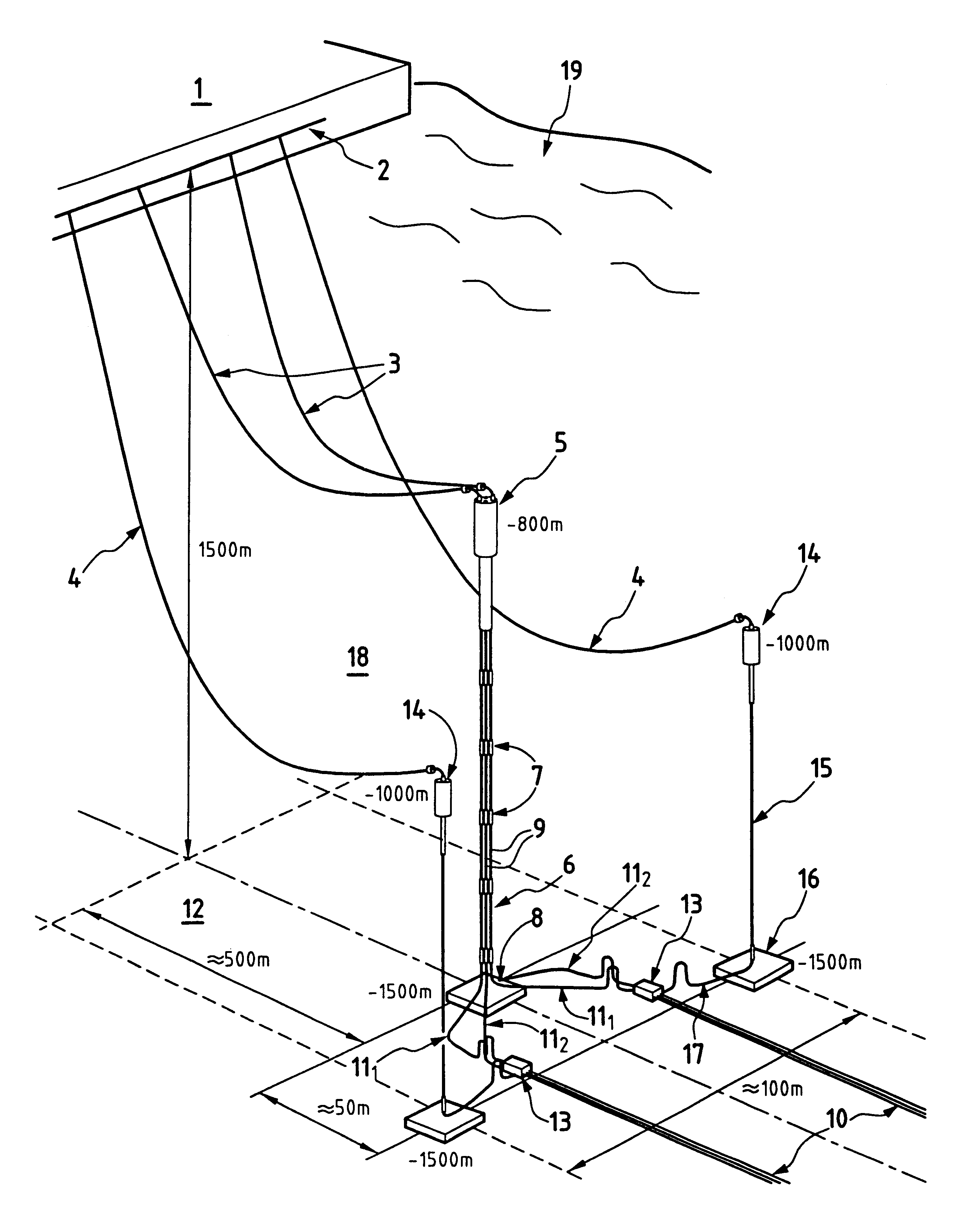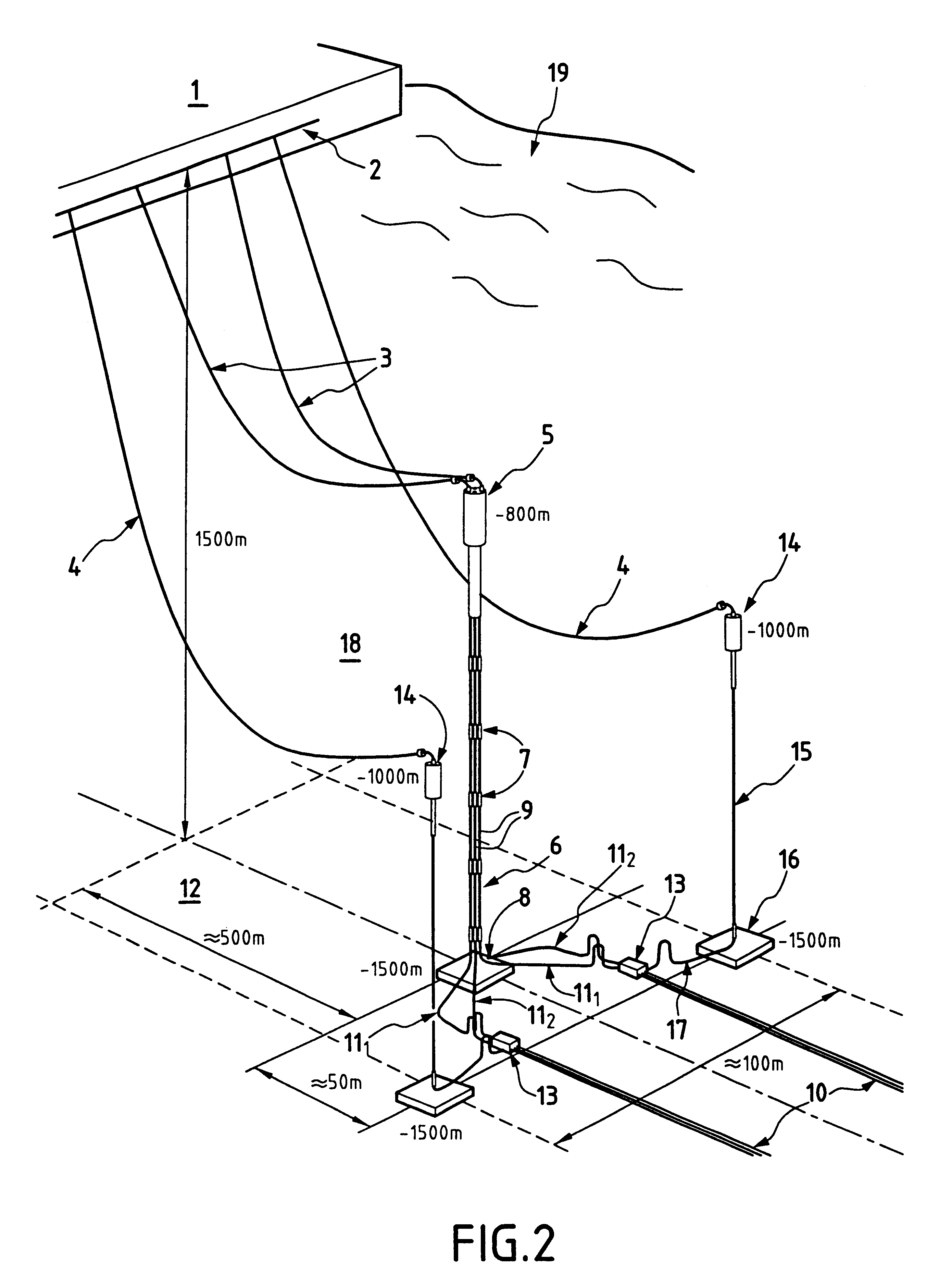Method and device for linking surface to the seabed for a submarine pipeline installed at great depth
- Summary
- Abstract
- Description
- Claims
- Application Information
AI Technical Summary
Problems solved by technology
Method used
Image
Examples
Embodiment Construction
FIG. 2 shows an FPSO 1 anchored over an oil field at a depth of 1500 m under water 18, by means of an anchor system (not shown) and including, for example, on its port side, a support system 2 for supporting SCR pipes for petroleum effluents 3 and water injection pipes 4. The petroleum effluent SCRs are connected to a tower, e.g. situated at -800 m from the surface 19, via the top of the float 5 that has four through positions, only two of which are occupied. Said float is connected to the foot unit 8 on the sea bed by means of a tendon 6 having a multitude of guides 7 fixed thereto, with risers 9 being installed therethrough, the risers being connected at the foot unit to connection sleeves 11.sub.1 themselves connected to underwater pipes 10 via an intermediate connection block 13; other connection sleeves 11.sub.2 are ready for corresponding vertical risers to be installed.
Two identical water injection towers are each constituted by a float 14 installed at -1000 from the surface ...
PUM
 Login to View More
Login to View More Abstract
Description
Claims
Application Information
 Login to View More
Login to View More - R&D
- Intellectual Property
- Life Sciences
- Materials
- Tech Scout
- Unparalleled Data Quality
- Higher Quality Content
- 60% Fewer Hallucinations
Browse by: Latest US Patents, China's latest patents, Technical Efficacy Thesaurus, Application Domain, Technology Topic, Popular Technical Reports.
© 2025 PatSnap. All rights reserved.Legal|Privacy policy|Modern Slavery Act Transparency Statement|Sitemap|About US| Contact US: help@patsnap.com



